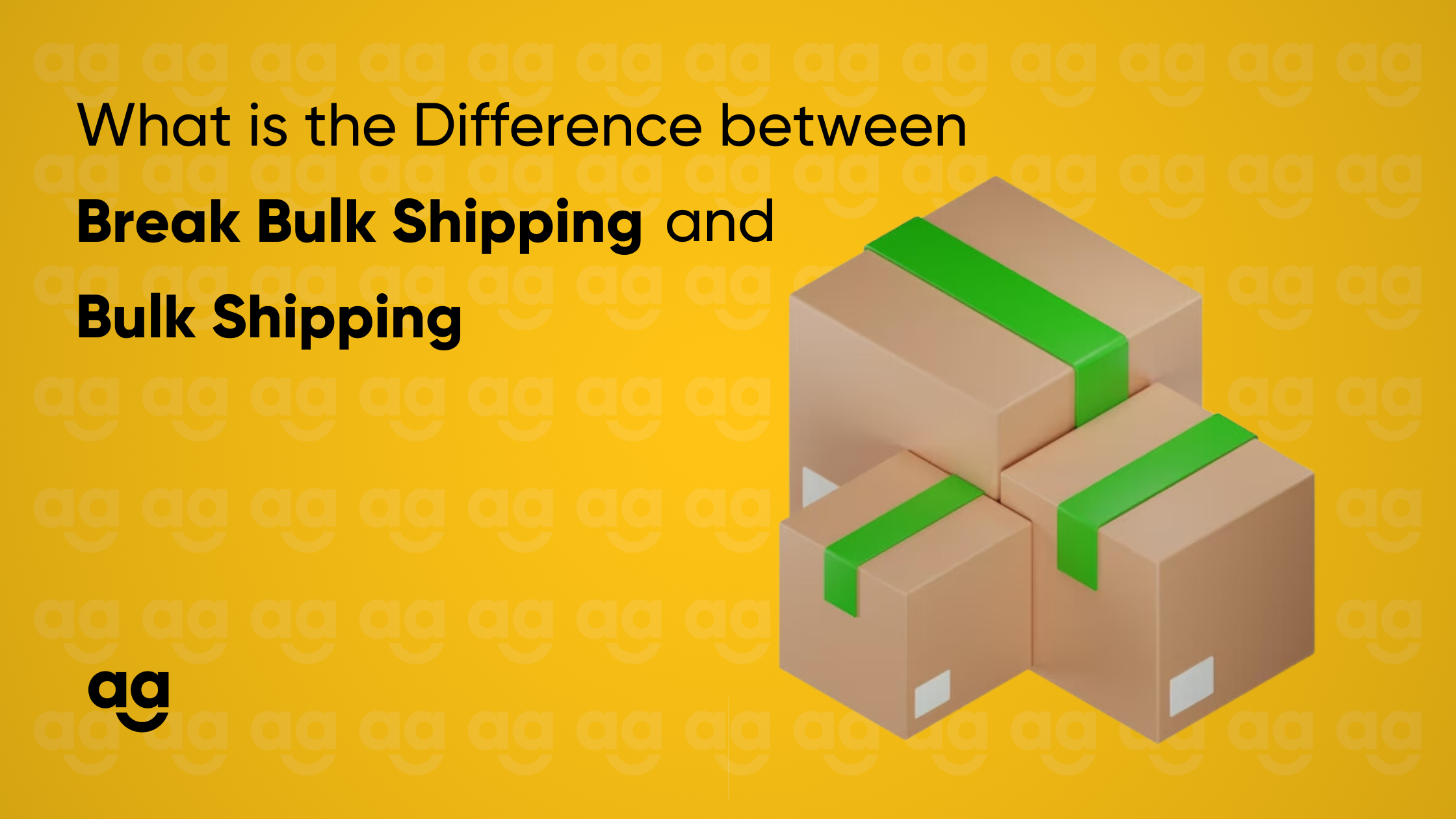Introduction
When it comes to global trade, shipping is considered one of the most essential components for transporting goods from one part of the world to another.
Bulk shipping and break bulk shipping are two main types of cargo within the shipping industry. While statistics suggest that 80% of all goods worldwide are transported by sea, transportation of bulk and break bulk cargo remains two of the most important shipping methods.
In the context of day-to-day business, bulk and break bulk are two terms that can be used incorrectly and interchangeably. However, there are distinctive differences between the two in terms of cargo, size, nature, capacity, handling, customers, ports, trade, terminals, equipment, and infrastructure.
In this post, we’ll explore bulk and break bulk shipping, including their meanings, benefits, and main differences.
Read on!
What is Bulk Shipping?
Bulk shipping is the process where the goods are shipped unpackaged, not inside boxes or pallets, and in large quantities. The commodities in bulk shipping can either be in liquid, solid, or granular form.
Some examples of bulk cargo include fertilizer, coal, natural gas, oil grains, petroleum products, iron ore, and more.
Among the other highlights of bulk shipping are-
- The freight rates in case of bulk shipping are charged per metric ton based on the quantity of loaded cargo.
- Bulk cargo is typically loaded and unloaded at dedicated bulk cargo terminals.
- Bulk cargo comprises the goods we need for our day-to-day use.
Benefits of Bulk Shipping
Here are some of the major benefits of bulk shipping:
- By transporting large quantities of goods at once, bulk shipping reduces the number of trips needed, helping to ensure timely deliveries.
- The method is the least environmentally damaging among all shipping methods.
- The robust construction of bulk shipping vessels ensures the safe and secure transportation of goods, minimizing the risk of damage during transit.
What is Break Bulk Shipping?
Break Bulk shipment is another common method that is primarily used to transport cargo or goods that does not fit in regular shipping containers. Cargo, in this case, is transported in boxes, crates, bins, drums, barrels, and any other handling equipment.
Here are some highlights of break bulk shipping you need to consider:
- The method helps to save packaging materials and reduce logistics costs
- Break bulk shipping uses mechanized loading and unloading technology, which helps to reduce the labor intensity of the handling process, thereby improving labor productivity.
- This method of shipping leads to less loss on the way, which helps to improve the overall quality of transportation work.
Benefits of Break Bulk Shipping
Below are some benefits of break bulk shipping:
- Reduction in total time spent on deconstruction and reconstruction so that the goods are ready for dispatch.
- Best for moving oversized and overweight items that won’t fit in a container or cargo.
- Cargo or goods in break bulk shipping method don’t have to be combined in a container; therefore, they can be shipped separately.
Bulk vs. Break Bulk Shipping-Summary of Differences
Here is a snapshot of the key differences between two types of shipping methods-
Differences |
Bulk shipping |
Bulkbreak shipping |
| Meaning | Bulk shipping involves goods to be transported in large quantities that are not pre-packaged during shipment, such as oil, grain, and other goods transported in loose mass. | In breakbulk shipping, the cargo or goods are divided into individual units that can be handled, stored, and transported more conveniently. |
| Examples | Examples of packaging units employed in bulk shipping include containers or a storage unit where all of the materials stay. | Examples of packaging units employed in break bulk shipping include boxes, crates, bags, pallets, and many others. Liquid break bulk cargo typically employs shipping barrels and drums. |
| Transportation | Transporting bulk cargo or goods requires different containers, such as open top, flat rack, and refrigerated for temperature-sensitive shipments | Transporting break bulk cargo or goods does not require specialized vessels |
Wrapping Up
Although bulk shipping and break bulk shipping sound similar, they are two completely different methods of shipping goods or cargo. While bulk shipping involves large quantities of product loaded loose and directly onto the transport vessel, without packaging, break bulk shipping involves individually packaged items (drums, boxes, crates) loaded onto ships without being stored in a larger container, such as the standard intermodal container.
If you are looking for a reliable bulk shipping partner, Shipyaari offers the best solutions as an expert logistics enabler. Book a demo now to get tailored B2B/bulk shipping solutions to fit your needs and budget!







 Shipping
Shipping







